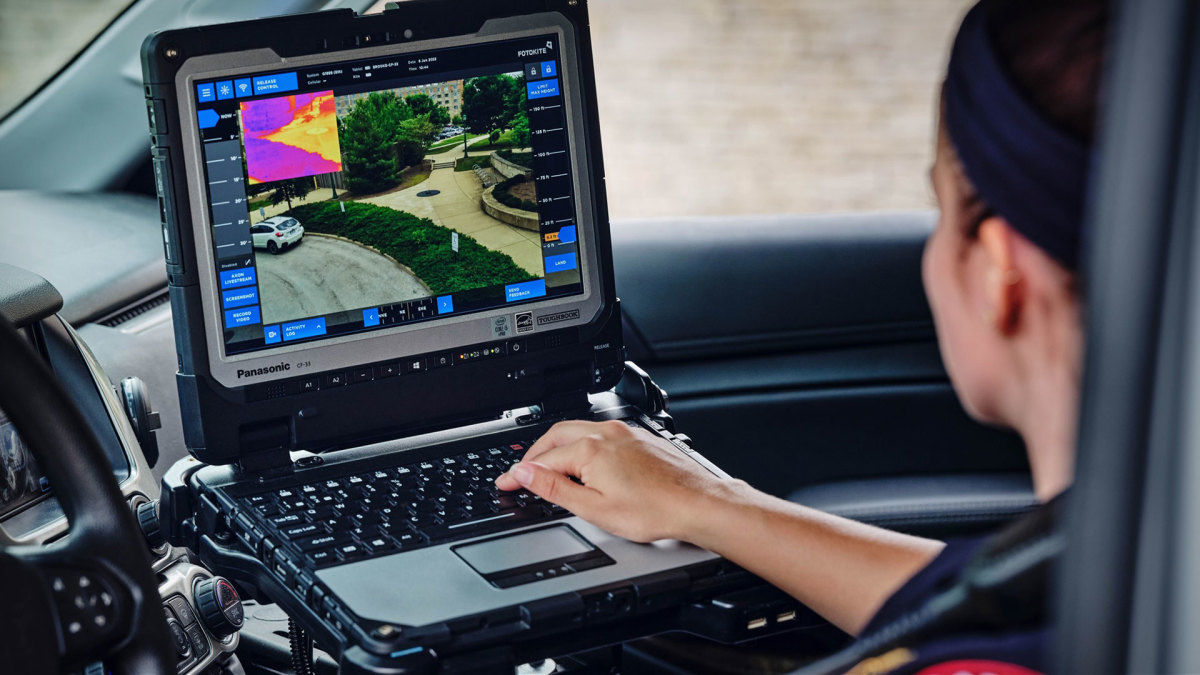What would Joe Friday say?
The legendary TV detective, portrayed by Jack Webb in the long-running show “Dragnet,” who famously wanted just the facts, would be shocked to see the impact artificial intelligence is having on modern-day crimefighting.
Police departments have been making use of such innovations as predictive policing, where AI algorithms analyze large datasets, like historical crime data, social-media activity and environmental factors, to predict where and when crimes are likely to occur.
There’s also facial recognition technology and biometrics — both of which have sparked controversy.
Related: Biometrics prompts praise and concerns as more companies adopt the science
Paperwork has been a longtime grievance of police officers, who would rather be busting bad guys rather than hunting and pecking their way through tedious reports.
Axon AXON, the company behind Tasers and body cameras, responded to this problem with Draft One, an AI tool that helps officers write reports using body-camera footage.
“Reporting is a critical component of good police work; however, it has become a significant part of the job that officers commonly refer to as ‘burdensome,’ ” the Scottsdale, Ariz., company says, noting that every week officers in the U.S. can spend up to 40% of their time — or 15 hours of a 40-hour week — on what is essentially data entry.

Axon Enterprise
Police say AI saves time
Axon said that agency trials have resulted in roughly one hour of time saved per day on paperwork. For every eight officers who use Draft One during their workdays, that translates to an extra eight-hour shift or more, the company added.
“Draft One remains our fastest-adopted software solution,” Axon Founder and Chief Executive Rick Smith told analysts during the company’s second-quarter earnings call in August.
More Tech Stocks:
- Musk’s Netflix boycott could actually hurt the streamer
- OpenAI’s deal with AMD proves AI race has just begun
- Goldman Sachs tweaks Nvidia’s stock price target with a twist
- The stock market laughed, then Palantir redefined the fight
“When customers start to use a product like Draft One for 60 days [they] say, ‘man, I’m spending a full day more every week on the road fighting crime as opposed to sitting behind a computer,” Chief Operating Officer Josh Isner said. “Those are the kinds of stories that just build.”
Scott Brittingham, an officer with the Fort Collins, Colorado, police department, said that a report that might have taken him 45 minutes to write takes just 10 minutes.
“I was a little bit skeptical; I’m not a big technology person,” Brittingham said in a March interview at the Fort Collins police station for CNN’s Terms of Service podcast.
But spending less time writing reports means Brittingham can “take more calls for service” and “be proactive in preventing crime,” he said.
Axon declined to say how many departments currently use Draft One, but police have also adopted it in Lafayette, Ind.; Tampa, Fla.; and Campbell, Calif.
Police departments in Minnesota are increasingly using artificial intelligence to write police reports, KSTP reported earlier this month.
Rights group cites ‘meager oversight’
Draft One uses Generative AI “and includes a range of critical safeguards, requiring every report to be reviewed and approved by a human officer, ensuring accuracy and accountability of the information before reports are submitted,” Axon says.
Nevertheless, the technology has raised concerns. Both California and Utah have laws that require disclosure when artificial intelligence is used to generate police reports.
A study by the Electronic Frontier Foundation, a digital rights group, said its investigation found that Draft One “seems deliberately designed to avoid audits that could provide any accountability to the public.”
The foundation said that Draft One uses a ChatGPT variant to process body-worn camera audio of public encounters and create police reports based only on the captured verbal dialogue. It does not process the video.
“The Draft One-generated text is sprinkled with bracketed placeholders that officers are encouraged to add additional observations or information — or can be quickly deleted,” the group said, adding that the product offers “meager oversight features that deliberately conceal how it is used.”
Related: R&D spending now can have big payoffs later for companies
An Axon spokesperson told Ars Technica that “just as with narrative reports not generated by Draft One, officers remain fully responsible for the content.
“Every report must be edited, reviewed, and approved by a human officer, ensuring both accuracy and accountability,” the spokesperson said.
“Draft One was designed to mirror the existing police narrative process — where, as has long been standard, only the final, approved report is saved and discoverable, not the interim edits, additions, or deletions made during officer or supervisor review.”
Axon shares are up nearly 15% this year and up 55% from this time in 2024.
Related: AI makes inroads in massive multibillion-dollar market
#police #agencies #adopt #raising #efficiency #concern